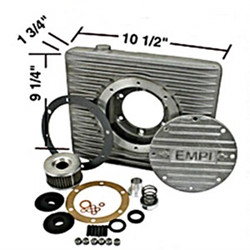So, a small project, the goal being to increase oil volume as an experiment on a generator. Side bonus would be to be able to rig up a filter for the circulated oil.
Steps:
1. Assume your standard 5kW to 7kW generator, for example Honda EM or EU series.
2. If dual 10mm drain plugs, use a Fumoto or Qwikvalve nipple extension part with a heat tolerant hose
3. Connect a 12v DC motor in-line, powered from the starter battery or it's own internal battery.
Something similar to this:
https://www.aliexpress.com/item/oil-pump...2693114001.html
Results hoped for:
1. The increased oil volume would provide some amount of cooling, perhaps an oil cooler could also be attached
2. The possibility of adding an oil filter would add service life extension to the unit.
Ok, now shoot me.
Steps:
1. Assume your standard 5kW to 7kW generator, for example Honda EM or EU series.
2. If dual 10mm drain plugs, use a Fumoto or Qwikvalve nipple extension part with a heat tolerant hose
3. Connect a 12v DC motor in-line, powered from the starter battery or it's own internal battery.
Something similar to this:
https://www.aliexpress.com/item/oil-pump...2693114001.html
Results hoped for:
1. The increased oil volume would provide some amount of cooling, perhaps an oil cooler could also be attached
2. The possibility of adding an oil filter would add service life extension to the unit.
Ok, now shoot me.


